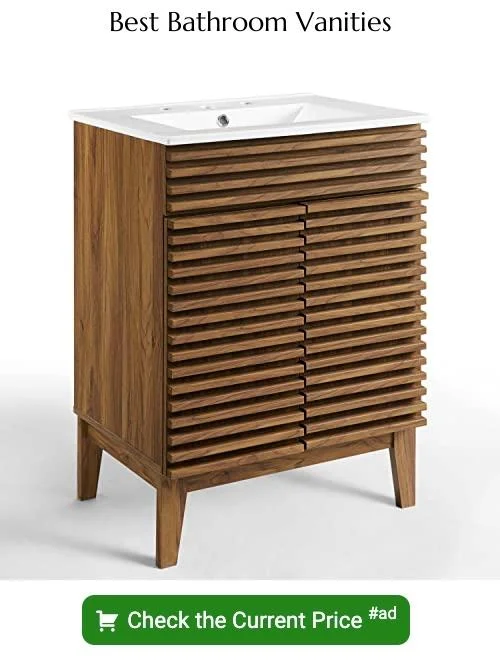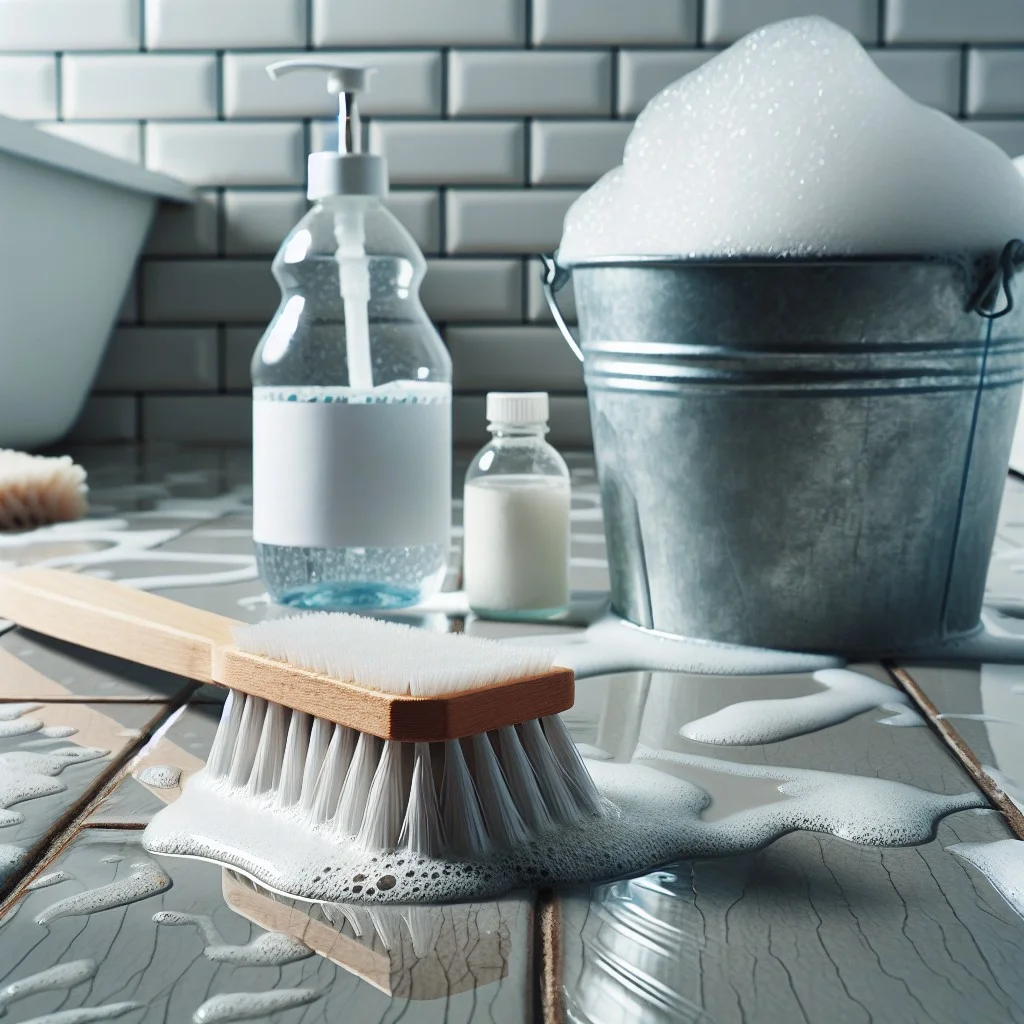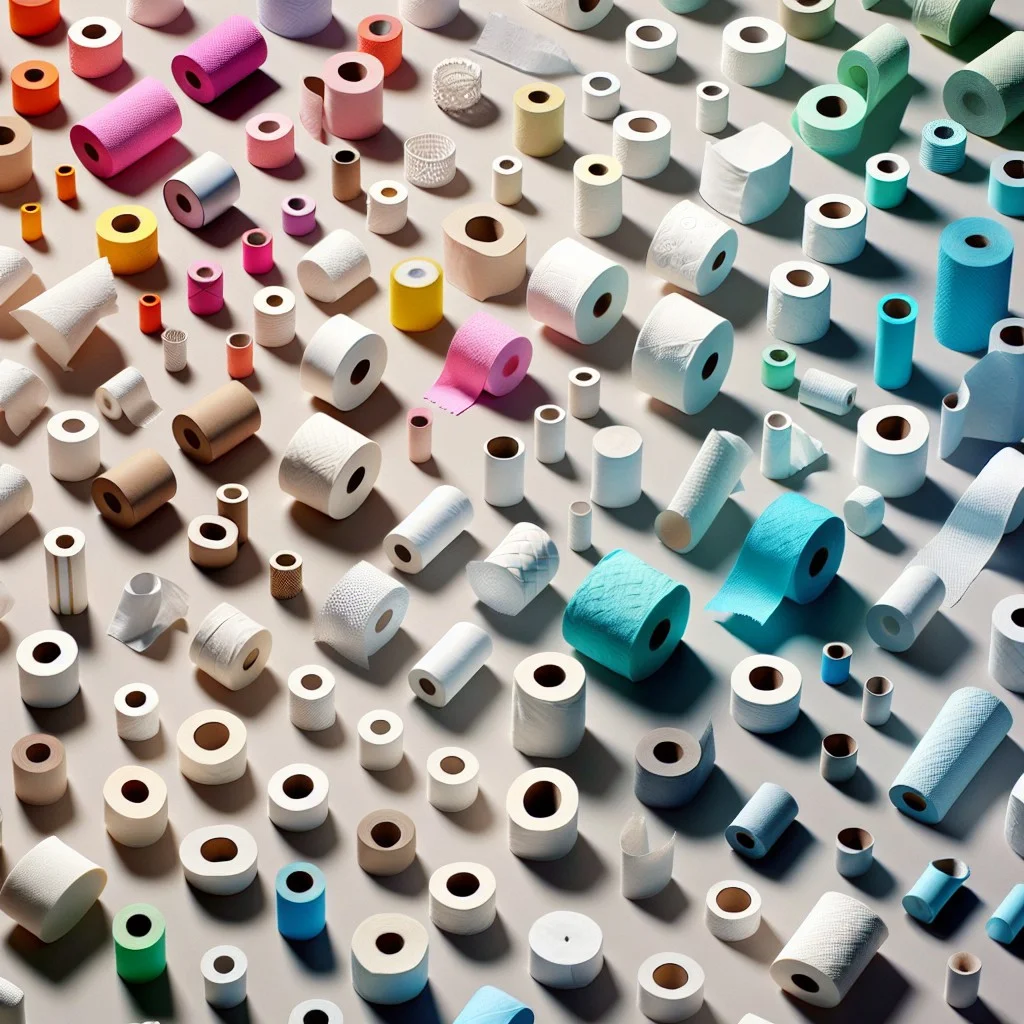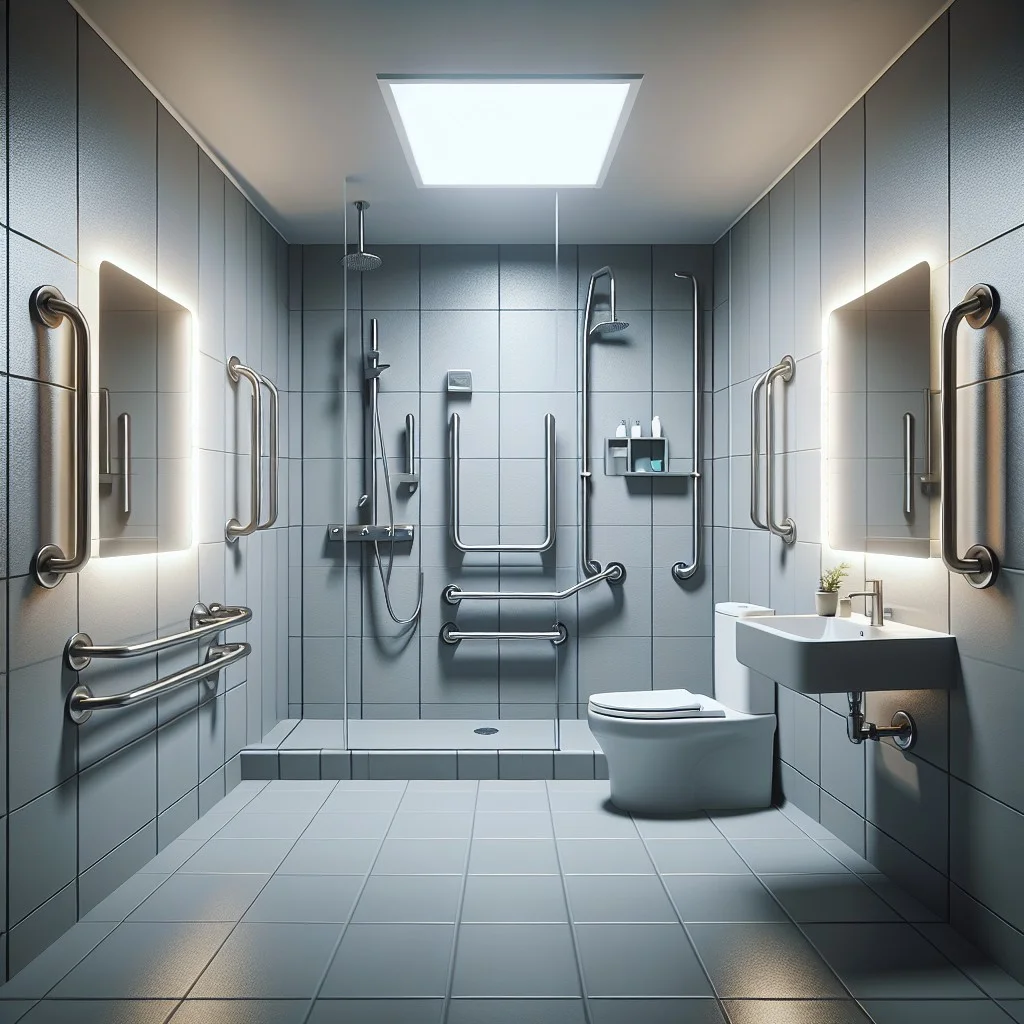Last updated on
Diving into the world of bathroom vanity makers can revolutionize your bathroom design because their creativity and craftsmanship guarantee a unique touch to your personal oasis.
Key takeaways:
- Minimalist cabinets and clean lines are popular in contemporary bathroom design.
- Wall-mounted vanities create a sleek, modern look and save space.
- Materials like solid wood and granite offer durability and aesthetics.
- Custom vanities allow for personalization in style and storage solutions.
- Showrooms provide hands-on experience and better visualization of vanities.
What's Inside
Bathroom Vanity Trends
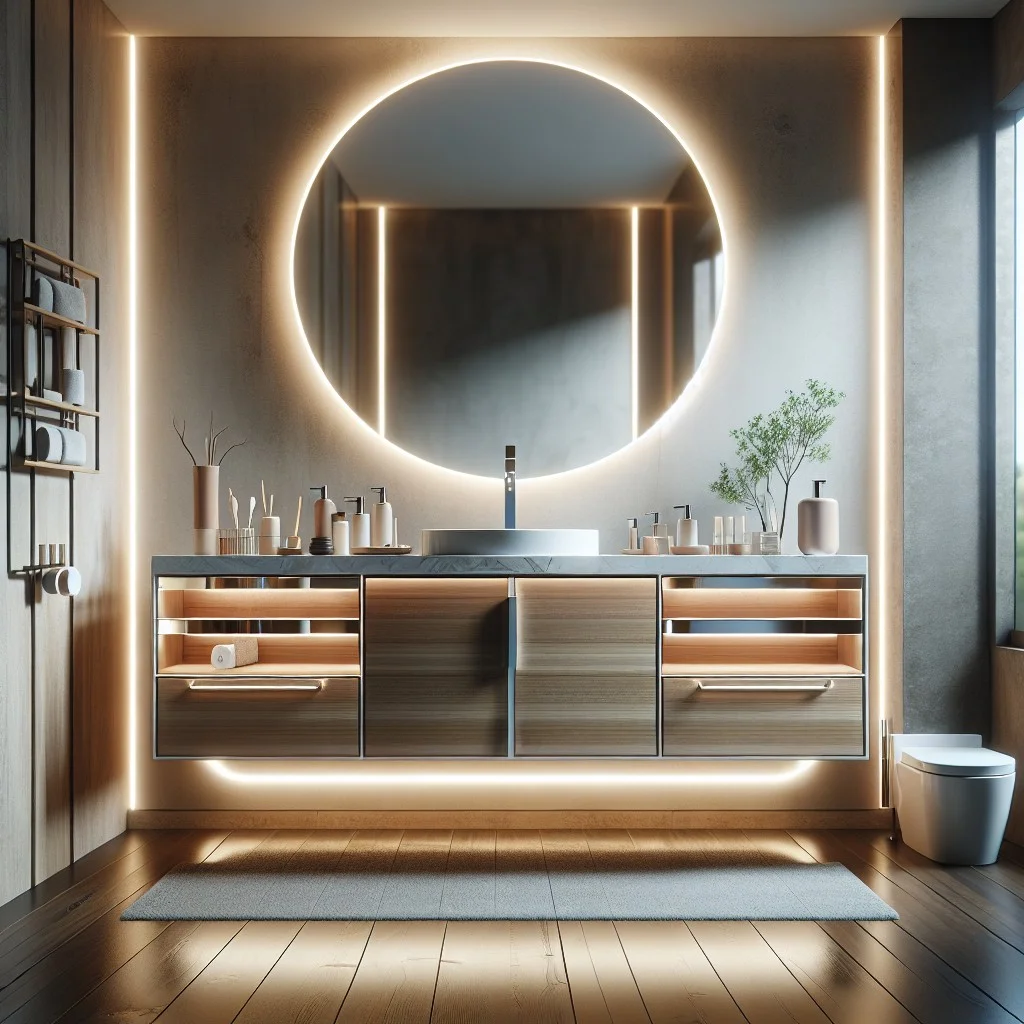
As homeowners seek to create spa-like oases within their homes, the fusion of functionality and style has taken center stage in bathroom design. Minimalist cabinets with clean lines and uncluttered surfaces embody the contemporary ethos, while traditionalists might gravitate towards ornate woodwork and classic finishes.
The integration of smart technology mirrors with LED lighting and touch-screen capabilities has also emerged, offering convenience alongside modernity. Eco-conscious consumers are increasingly drawn to sustainable materials like bamboo and reclaimed wood, reflecting a growing awareness of environmental impact.
For those with space constraints, floating vanities present a savvy solution, freeing up floor space and imparting an airy, open feel to even the smallest of bathrooms. In custom builds, personalization soars with unique color choices and hardware that add a signature touch.
Types of Bathroom Vanities
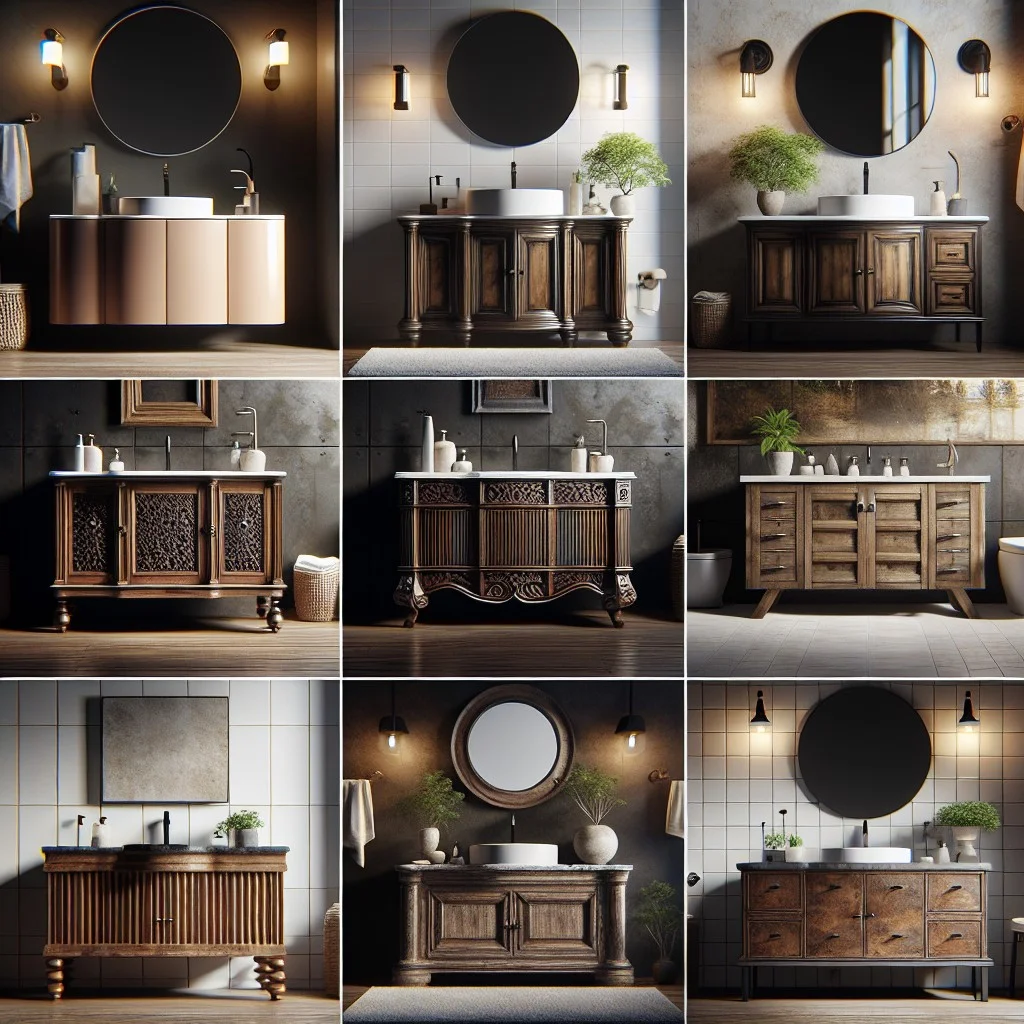
Freestanding vanities offer a classic approach, providing ample storage and easy installation. They come in numerous styles, from vintage to contemporary, and can be placed anywhere in the bathroom that plumbing allows.
Wall-mounted or floating vanities create a modern, sleek look. They are mounted directly to the wall, freeing up floor space which can make a bathroom appear larger. This type is particularly popular in minimalist and small bathroom designs.
Corner vanities are perfect for tight spaces. Their angled design allows them to fit into a corner, maximizing space efficiency without sacrificing functionality.
Under-mounted sinks with vanity countertops provide a seamless look. The sink is mounted underneath the counter, making the surface easy to clean and offering a streamlined appearance.
Vessel sink vanities feature a bowl-shaped sink that sits on top of the counter, acting as a statement piece. They work well with a variety of décor styles and offer a unique touch to the bathroom.
Double vanities are ideal for shared bathrooms, providing two separate sinks within one unit. This can ease morning and evening routines, preventing congestion in family or couple’s bathrooms.
Custom vanities are tailor-made to fit specific spaces, needs, and preferences. This option allows for personalization in terms of materials, dimensions, storage solutions, and style.
Materials Used in Vanity Construction
Durability and aesthetics go hand in hand when choosing the right materials for bathroom vanities. Solid wood, a classic choice, stands up to moisture while offering enduring beauty. Woods like oak, maple, and cherry are popular for their resilience and rich textures.
Engineered wood options, such as MDF or plywood, are budget-friendly and often come with a moisture-resistant veneer, making them suitable for damp environments. These materials can mimic the look of solid wood without the higher price tag.
For contemporary designs, metal frames offer a sleek edge and are typically powder-coated to resist rust and corrosion. Stainless steel and aluminum are common metal choices, providing a modern look and lightweight strength.
Stone countertops add a luxurious touch to vanities. Granite, marble, and quartz are favored for their hardness and range of colors. These stones can elevate the overall design while providing a durable surface resistant to scratches and stains.
Lastly, glass and acrylics bring a light and airy feel to vanities, often used for vessel sinks or as shelving. These materials can open up tight spaces and contribute to a clean, minimalist aesthetic while still being easy to clean and maintain.
Designing a Custom Vanity
Embarking on the journey of creating a custom vanity allows you to tailor every aspect to your specific needs and style preferences. Begin with a consideration of space – measure the area carefully to ensure your vanity won’t overcrowd the room. Reflect on storage necessities; think about the number and size of drawers and cabinets required to house your toiletries comfortably.
Next, choose a material that speaks to both aesthetics and functionality – whether it be a classic wood finish or a modern, moisture-resistant compound. Decide on a sink style and countertop material that complements the overall design and meets your durability requirements. For a truly personal touch, select unique hardware to add character to your vanity.
Remember the importance of lighting and how it can enhance the vanity’s usability. Plan for integration of task lighting or room for wall-mounted fixtures that ensure adequate illumination. Lastly, consult with a professional to refine your design and ensure that all elements work harmoniously together, considering plumbing and fixture compatibility for a seamless installation process.
Selecting the Right Vanity for Your Space
Selecting an appropriate vanity for your bathroom hinges on several factors. Consider the room’s dimensions first; a small space demands a compact vanity to maintain ease of movement. For larger rooms, a double vanity not only provides ample storage but can also be a focal point of the room.
Think about your storage needs; do you require lots of compartments, or will a simpler design suffice? Note that a vanity with more storage options might require a larger footprint.
Next, assess the existing plumbing; it dictates the type of vanity you can install without extensive modifications. If you aim to keep renovation costs low, choose a vanity that aligns with your bathroom’s current plumbing layout.
Height is another consideration; the standard vanity height is around 31 inches, but modern trends see taller options designed for standing users without the need to stoop. Choose a height that complements the primary users’ comfort.
Lastly, leave adequate clearance for bathroom doors and internal drawers to open fully without obstruction, ensuring practicality and ease of use. This consideration is paramount, especially in tighter spaces, to avoid cramped or awkward usability.
Vanity Installation Tips
Ensure accurate measurements of your space before selecting a vanity to avoid sizing mishaps. A vanity that’s too large can make a bathroom feel cramped, while one that’s too small may look out of place and offer insufficient storage.
Check for plumbing compatibility. The location of your plumbing will influence the type of vanity you can install. Wall-mounted vanities may require rerouting plumbing, while freestanding vanities often accommodate existing setups.
Gather the right tools for the job, including levels, drills, and wall anchors. A level is crucial for ensuring your vanity is perfectly horizontal, preventing uneven drawers or an imbalanced countertop.
Wall reinforcement may be necessary, especially for wall-mounted vanities. Confirm that the wall structure can support the weight, and if not, add studs or blocking where the vanity will hang.
Seal joints and edges, particularly where the vanity meets the wall, to prevent water damage. Silicone caulk is typically used for its waterproof properties and clean finish.
Connect the vanity to the plumbing using flexible hoses for easy installation and future maintenance. Replacing a rigid setup with flexible connections makes it simpler to install the vanity and handle any future repairs.
Test the drawers and doors before finishing the installation to ensure there’s no interference with the plumbing or walls. Adjustments can be made more easily before the vanity is fully secured and the plumbing is connected.
Consider hiring a professional if any step feels out of your expertise. A poorly installed vanity can lead to water damage or functionality issues, which may incur additional expenses down the line.
Maintenance and Care for Vanities
To ensure your vanity’s longevity, regular upkeep is key. Here are practical tips:
- Wipe Spills Immediately: Prevent water damage and stains by cleaning spills and splashes as soon as they happen, using a soft, damp cloth.
- Use Gentle Cleaners: Harsh chemicals can damage the finish. Opt for mild soap and water or cleaners specifically designed for your vanity’s material.
- Avoid Excessive Moisture: Ensure good ventilation to keep humidity levels in check, as excessive moisture can warp wood and promote mold growth.
- Seal Natural Stone: If your vanity top is natural stone, reapply sealant annually to protect against stains and etching.
- Tighten Hardware: Periodically check and tighten knobs and drawer pulls to prevent them from coming loose.
- Respect Weight Limits: Be mindful not to overload drawers and shelves to avoid damage to the structure.
By following these simple steps, your bathroom vanity will retain its beauty and functionality for years to come.
Pricing Considerations for Bathroom Vanities
When budgeting for a new bathroom vanity, several factors influence the final cost. The size of the unit often dictates price; larger vanities typically cost more due to the increased materials and labor involved. Material choice plays a critical role, too—premium woods, stone countertops, and high-end finishes can drive up costs substantially.
Consider whether you’re opting for a ready-made piece or a custom design. Off-the-shelf vanities from big box stores tend to be more wallet-friendly, whereas custom-built options are priced higher for their bespoke quality and craftsmanship. The complexity of the vanity design also matters; intricate patterns or additional features like built-in organizers can add to the expense.
Don’t overlook installation fees if you’re not planning a DIY project. Professional installation ensures proper fitting and finish but will add to your budget. Lastly, the hardware components—faucets, knobs, and drawer pulls—although smaller, can also impact cost, especially if you’re eyeing designer brands.
Always remember to weigh functionality and durability against aesthetic appeal to ensure that your investment is both practical and visually pleasing for years to come. Carefully consider these elements to make an informed choice that aligns with both your needs and your financial comfort zone.
Crafted in the USA
Embracing American-made bathroom vanities supports local economies and ensures adherence to high-quality manufacturing standards. With a focus on artisanal craftsmanship, each piece reflects the care and precision that skilled American workers put into their trade.
Moreover, sourcing domestically can lead to shorter lead times and potentially lower shipping costs, making it a favorable option for timely renovations. These vanities often come with the added benefit of customizable options, offering homeowners the opportunity to tailor their pieces to their specific style preferences and functional needs.
Additionally, domestic production typically adheres to more stringent environmental regulations, contributing to more sustainable practices within the industry.
Explore New Rift White Oak Strasser Vanities
Dive into the elegance of Rift White Oak Strasser Vanities, where the beauty of natural wood meets contemporary design.
These vanities showcase unique linear wood grain patterns, offering a distinct, modern aesthetic that stands out in any bathroom space.
Not only does the Rift White Oak provide a durable and long-lasting material, but it also brings a warm, welcoming ambiance that can be paired seamlessly with various color palettes and fixtures.
With a reputation for fine craftsmanship, Strasser ensures that each vanity is a statement of luxury and functionality.
As you consider enhancing your bathroom, keep in mind the customization options available, from hardware finishes to countertop choices, allowing you to tailor the piece to your taste and needs.
Customer Testimonials
Glowing reviews from satisfied customers can offer you invaluable insights and instill confidence when selecting your bathroom vanity maker. Here’s why perusing testimonials is a smart move:
- Authenticity: Real-life experiences reflect the quality and reliability of the product and the company’s customer service.
- Customization feedback: Find out how well the maker accommodates unique design requests.
- Durability reports: Long-term users can attest to how the vanities withstand daily wear and tear.
- Installation experiences: Learn about the ease or challenges of installing the vanities from firsthand accounts.
- Post-purchase support: Gauge the maker’s responsiveness to issues or inquiries after the sale.
Reading these stories of transformation and satisfaction equips you with a broader understanding of the product and the service, ensuring you make an informed decision for your bathroom remodel.
Find a Showroom Near You
Embarking on the journey to select the perfect bathroom vanity benefits greatly from a hands-on experience. Visiting a showroom allows you to:
- Visualize vanities in a real-life setting, providing a better sense of how they may fit into your bathroom layout.
- Examine the craftsmanship up close, ensuring the quality meets your expectations.
- Assess the true colors and finishes, which can vary under different lighting conditions compared to online images.
- Discuss customization options with knowledgeable staff who can offer expert advice tailored to your specific needs.
- See the latest designs and innovations that might not yet be available online.
To locate a showroom near you, many vanity manufacturers offer a ‘Store Locator’ tool on their website. Simply enter your zip code and you’ll get a list of authorized dealers with addresses and contact information. It’s advisable to call ahead and check if they have the models you are interested in. This way, you make the most of your visit and come away confident in your bathroom vanity choice.
Shop By Style
Selecting the right style of bathroom vanity can dramatically enhance the aesthetics and functionality of your space. Whether you’re seeking a sleek, modern design or a more classic, timeless look, numerous options cater to your personal taste and bathroom layout.
- Modern Vanities: Characterized by clean lines, minimalistic features, and often incorporating materials like glass or metal for a contemporary feel.
- Traditional Vanities: Offer a sense of elegance and history, usually featuring wood finishes, detailed moldings, and ornate hardware for a luxurious touch.
- Rustic Vanities: Employ natural, rough-hewn woods and a sturdy structure to bring a cozy, cabin-like ambiance to your bathroom.
- Transitional Vanities: Blend the old and new, combining traditional charm with modern simplicity for a balanced and versatile appearance.
- Floating Vanities: Attached to the wall, they create an illusion of space by freeing up the floor, suitable for bathrooms with limited square footage.
The right style not only complements your home’s decor but also meets your storage needs and personal preferences. Keep in mind that the vanity is often the focal point of your bathroom; choosing a style that resonates with your aesthetic can set the tone for the entire room.
Single Vanities
Ideal for small bathrooms and powder rooms, single vanities come in various designs that maximize your space without skimping on style. Most single units range from 24 to 48 inches and can be tailored to fit traditional, contemporary, or modern aesthetics.
When choosing a single vanity, consider the sink type — drop-in, undermount, or vessel — and how it complements the overall design. Integrated storage options such as drawers and shelves are crucial; they enhance functionality while maintaining a sleek silhouette.
Pay close attention to the countertop material, as well—options like marble or quartz not only enhance durability but also add a touch of luxury. For those with very limited space, corner vanities can be a smart, space-efficient solution.
Remember that proper lighting and mirror selection are key to making the most of your single vanity setup by creating the illusion of a larger area and amplifying the visual appeal.
Double Vanities
Doubling up on bathroom space efficiency and convenience, vanities with twin sinks offer couples and family members alike the luxury of personal space during their morning and evening routines. In households where the bathroom is frequently in high demand, this style can significantly cut down on prep time, allowing multiple individuals to brush their teeth or wash up simultaneously. Furthermore, they come equipped with ample storage, divided between both sides, ensuring personal items remain organized and within reach.
When considering such options, it’s essential to measure your bathroom’s dimensions to ensure a proper fit. Typically, these models start at 48 inches in length, with more expansive options available for larger bathrooms. Available in a diverse array of designs, from modern floating types to traditional cabinet-based models, there’s a double vanity to match every aesthetic preference—transforming both the functionality and visual appeal of the bathroom.
FAQ
How much does it cost to have a bathroom vanity made?
The cost for a custom-made bathroom vanity typically ranges from $500 to $2,800 for the build, with an additional charge of up to $1,000 for installation.
How much should I pay to have a bathroom vanity installed?
The cost to have a new bathroom vanity professionally installed generally ranges from $200 to $1000, inclusive of services like attaching the sink and faucet.
Is it cheaper to build or buy a bathroom vanity?
Taking all factors into account, custom-building a bathroom vanity typically proves to be approximately twice as expensive as buying a prefabricated one primarily due to the involvement of more subcontractors and the necessity to purchase materials separately from various vendors.
What factors influence the cost of custom bathroom vanity?
The cost of a custom bathroom vanity is influenced by factors such as the materials used, the design complexity, the intricacy of installation, and the vanity’s size.
What are the top materials used in the construction of bathroom vanities and how do they affect the price?
The top materials used in the construction of bathroom vanities are wood, PVC, MDF, and stainless steel; where wood and stainless steel are pricier due to their durability and elegant appearance, while PVC and MDF are more budget-friendly due to their affordability and versatility.
Are there any specific maintenance costs attached to the upkeep of a bathroom vanity?
Yes, costs for maintaining a bathroom vanity may include periodic replacement of hardware, occasional repainting or re-staining, and potential plumbing repairs.
